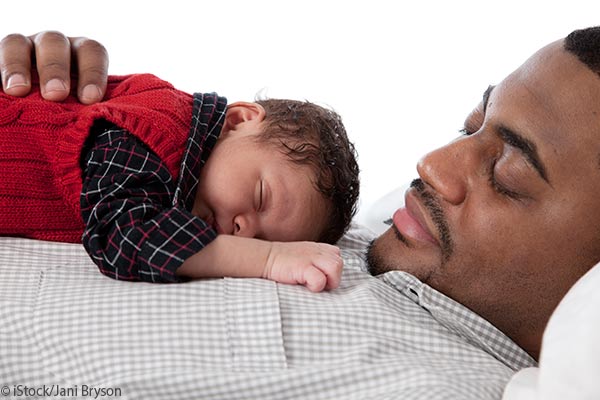Question: My first child didn’t sleep through the night until he was two. How can I prevent two years of long, sleepless nights with my second baby?
Answer from Cherie Tannenbaum, NP, IBCLC:
Feeding and rocking a baby to sleep is one of the most pleasurable experiences of early parenthood. Indeed, snuggling and rocking our babies is calming for both baby and parent!
During the first few of months of a baby’s life, a parent’s sleep pattern can be fractured and irregular. We often refer to our parenting style during this time as being in “survival mode.” In other words, we do whatever we have to do to get the baby back to sleep in the middle of the night, and often to nap during the day as well. This is appropriate in these early weeks and does not create long-term habits.
At about two months of age, babies become more aware of patterns and routines. For instance, they know when you put them on the changing table that you’re going to change their diaper or clothes. Likewise, if you have been feeding and rocking them in the glider until they fall asleep, feeding and rocking become their “sleep triggers.” Also by about this age, unlike the newborn phase, most babies (like adults!) sleep better in the dark. Preparing for this change in their awareness can ease sleep transitions.
When baby is between six and eight weeks of age, it is helpful to implement a bedtime routine. “Bedtime,” at this age, is the time baby currently begins a slightly longer stretch of sleep at night before he wakes for his first feeding (often between 10:00 pm and 1:00 am). This bedtime routine can be any combination of a nice warm (soap-free) bath, baby massage, diaper change, swaddle, story, and feeding. Singing a special song—with or without rocking—and a dark room signal baby that it is time to sleep. If baby likes a pacifier, this can be included.
The goal is to transition baby from feeding and/or rocking until he is in a deep sleep before being put down in his bed, to putting him down “drowsy but awake.” Baby might “fuss” a bit when first trying “drowsy but awake”, but often just placing a hand on his belly and jiggling or lightly patting and shushing will lull him into his first stretch of sleep. If fussing ramps up to crying, then pick baby up and patiently start over until he does respond to the patting. If baby is not progressing, he just might not be ready, so go back to your previous routine and try again in a week or two. This is a reasonable strategy to try with older babies as well, who may or may not respond as easily as a younger baby.
More questions about how to help your family get more sleep? Consider a consultation with Cherie Tannenbaum, NP, IBCLC, Coordinator of our First Years Program at Parents Place in Palo Alto. For more information, contact her at [email protected] or (650) 688-3053 or attend a drop-in Baby and Me! group at Parents Place, Palo Alto.



